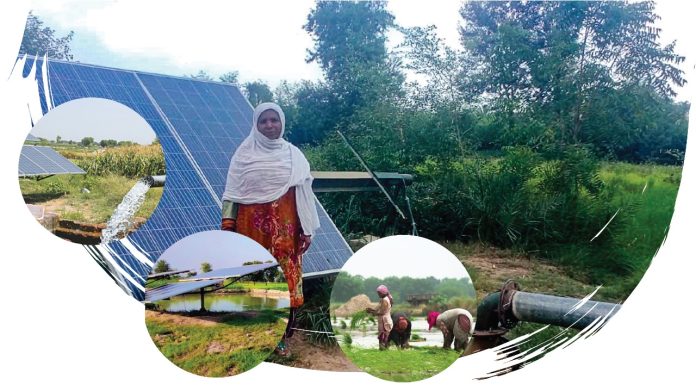Pakistan, accounting for less than 1% of global carbon emissions, finds itself in a vulnerable situation. According to the Global Climate Risk Index, Pakistan is ranked as the 8th most climate-vulnerable country worldwide, suffering nearly 10,000 deaths and $3.8 billion in economic losses from 1999 to 2018 due to climate change.
Recognizing the urgency of the matter, the country is turning to green financing solutions. This aligns with the nation’s dedication to the Sustainable Development Goals (SDGs). However, it is estimated that there will be a yearly deficit of $3.72 billion to achieve the SDGs by 2030, with an extra $7 billion to $14 billion needed for climate adaptation alone.
At the recent Pakistan Climate Conference, the urgency reached a new peak. The finance minister emphasized the requirement of $340 billion to address the climate and developmental challenges – equivalent to 10% of the country’s estimated GDP from 2023 to 2030. Acknowledging the lack of funding to promote eco-friendly practices, experts have now redirected their attention towards non-traditional financial solutions like combining microfinance and green financing.
Once seen as a lifeline for the financially excluded, microfinance now emerges as a formidable force in the battle against climate change. It’s not just about financial access anymore; it’s about empowering individuals and enterprises, especially the often-underserved Micro, Small, and Medium Enterprises (MSMEs), to spearhead a green revolution. Picture this: microfinance institutions paving the way for businesses to embrace renewable energy solutions, from solar panels to solar-powered turbines. It’s more than adaptation; it’s about catalyzing a transformation, where every investment secures livelihoods and charts a course toward a sustainable future.
“Developing innovative financial solutions is necessary for organizations to share the responsibility of addressing climate change,” said Haaris Mahmood Chaudhary, Chief Operating Officer (COO) Mobilink Bank, emphasizing the importance of incorporating sustainable practices. “While awareness of green finance is growing day by day, many organizations have yet to mobilize it. To address this gap, we need a swift transition from understanding to implementation,” he added.
In 2021, Pakistan directed roughly $4 billion in public and private capital towards climate action, according to a Growth Gateway report. However, lagging private investment, both domestic and international, hindered the country’s efforts to tackle pressing climate challenges. The report further highlighted that international public investments currently dominate climate finance in Pakistan, with estimates suggesting a mere 5% contribution from the domestic private sector in 2021.
“To cultivate a sustainable future, it is important that we establish a reliable framework for green financing by initiating partnerships between private entities, public institutions and non-governmental organizations. Only by pooling together all our resources will we be able to better address the current impediments hindering the widespread accessibility of green financing, and we are doing this very effectively through our Change to Sustain program,” concluded Haaris.
The country has the opportunity to open up private and public investment by adopting an inclusive strategy to address policy shortcomings, improve data collection, and promote good governance in climate finance. By acting decisively today, Pakistan can close the window for action and ensure a more sustainable future by bridging the gap in climate financing.


